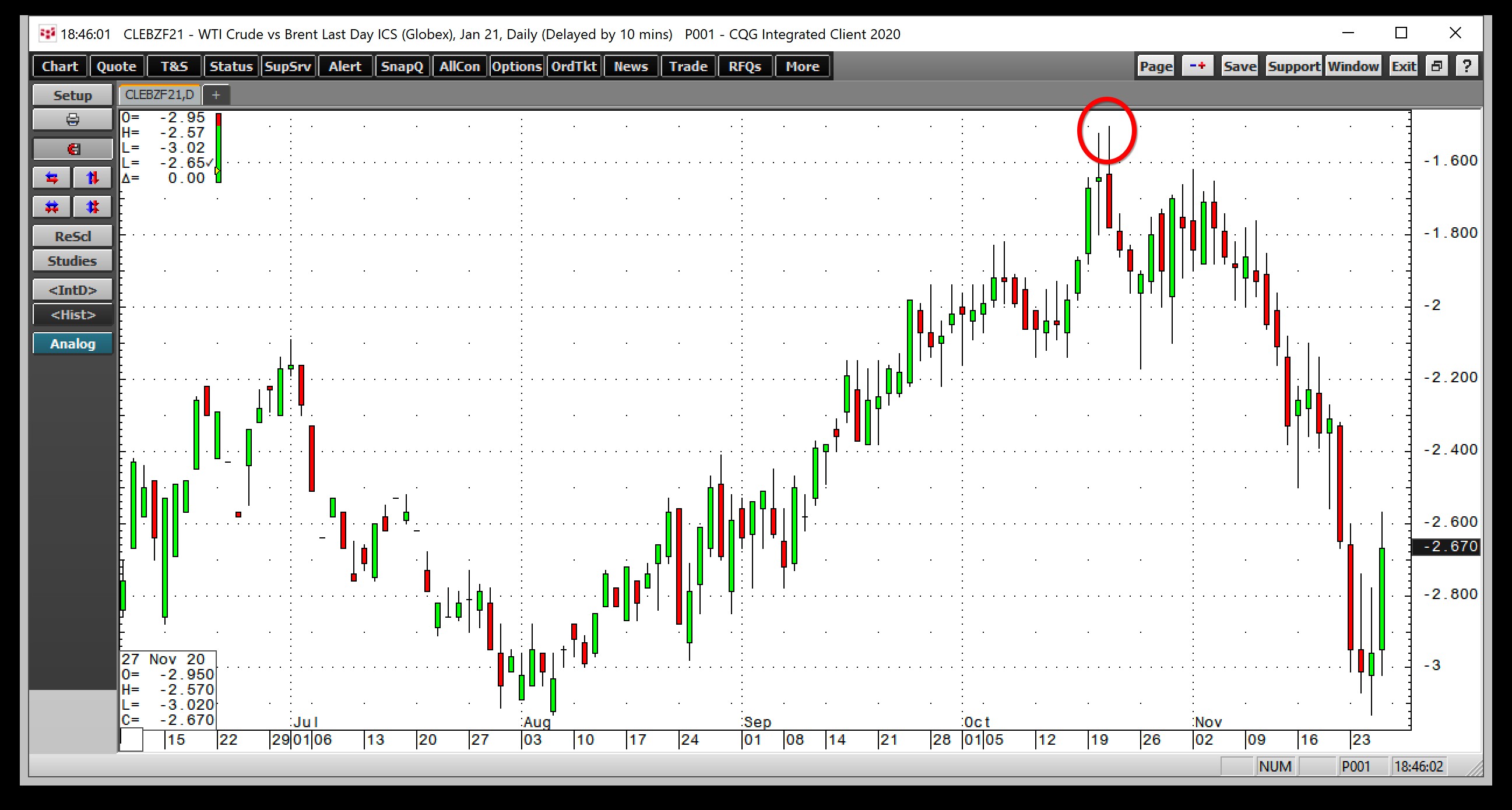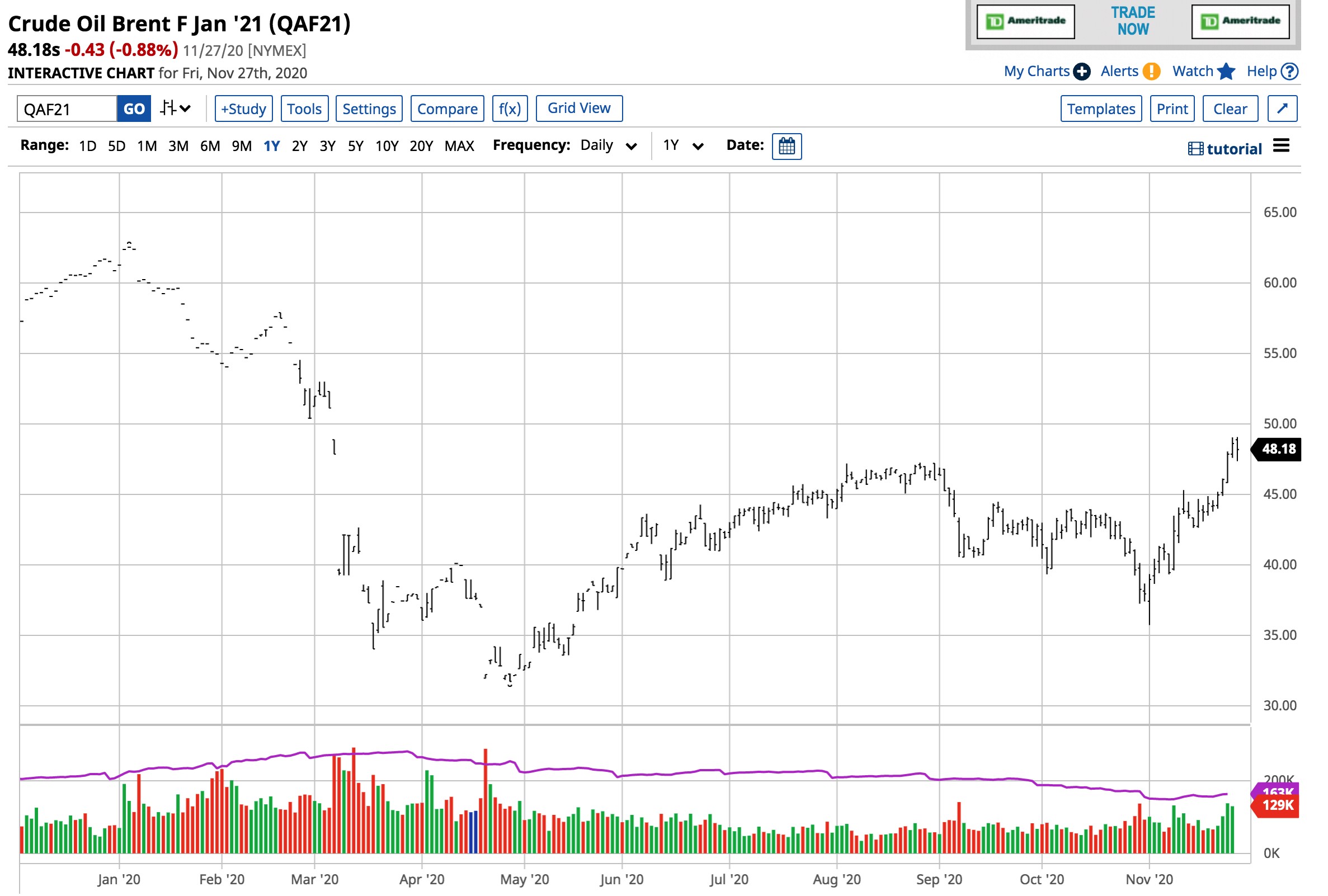- The Brent premium reached a low before crude oil declined to the November 2 low
- The premium has almost doubled from the low as crude oil recovered
- Production cut extensions and rising inflationary pressures support the price of crude oil- Chinese demand is bullish for Brent crude oil
The West Texas Intermediate grade of crude oil trades on the CME’s NYMEX division. The Intercontinental Exchange (NYSE:ICE) trades futures contracts on Brent North Sea crude oil. WTI and Brent are the two benchmarks for the oil market.
While there are many other crude oil grades, approximately one-third of the world’s oil producers and consumers use the WTI price as a benchmark, and two-thirds employ the Brent price as a pricing mechanism. Crude oils in different locations trade at premiums or discounts depending on supply and demand factors. Varying grades of petroleum command higher or lower prices compared to the benchmarks.
WTI is a lighter and sweeter grade of crude oil, meaning it has a lower sulfur content and is preferable for refining into gasoline, the most ubiquitous crude oil product. Brent’s higher sulfur and heavier composition make it more appropriate for processing into distillates such as heating oil, jet, and diesel fuels.
Meanwhile, the spread between Brent and WTI is one piece of the jigsaw puzzle for analyzing crude oil fundamentals. Brent-WTI is a quality spread when it comes to the grades and chemical composition of the two forms of petroleum. It is a location spread as the delivery point for WTI is Cushing, Oklahoma, and Brent is in the North Sea. Crude oil from Europe, Africa, and the Middle East tend to use the Brent benchmark for pricing. WTI tends to be landlocked, while Brent is a seaborne crude oil.

The spread has a political risk dynamic because the Middle East continues to be a turbulent region where production, refining, or logistical issues can cause price volatility in the blink of an eye. The premium for Brent has moved higher over the past weeks.
The United States Crude Oil Fund (NYSE:USO) and the United States Brent Crude Oil Fund (NYSE:BNO) track the futures prices of the two benchmark crude oils on a short-term basis.
The Brent premium reached a low before crude oil declined to the November 2 low
Since the Arab Spring in 2010, the Brent premium over WTI has typically increased when crude oil prices rise and decline during bearish periods.

Source: CQG
The daily chart of WTI minus Brent January futures illustrates the low in the spread on October 21. On that day, January NYMEX WTI futures settled at just over $40 per barrel. By November 2, the price fell to a low of $34.04. The decrease in the Brent premium was a prelude to the decline in the oil futures price to the lowest level since late May 2020.
The premium has almost doubled from the low as crude oil recovered
The daily chart of the Brent highlights that it rose to over $3.13 per barrel on November 25. On that day, nearby NYMEX WTI futures rose to a new high.

Source: CQG
The weekly chart shows that WTI futures rose above the late August $43.78 level on November 25 and was above the $45.50 level for the first time since early March, before the price carnage caused by the global pandemic took nearby NYMEX futures below zero. The Brent premium’s ascent was a bullish sign for WTI and Brent futures.

Source: Barchart
The January Brent crude oil futures chart shows that the energy commodity traded above the late August $47.25 level on November 24 and reached $48 for the first time since March 6. The Brent premium was at the $2.67 level at the end of last week.
Production cut extensions and rising inflationary pressures support the price of crude oil- Chinese demand is bullish for Brent crude oil
OPEC, Russia, and other world oil-producing nations have maintained a 7.7 million barrel per day production cut to address the decline in demand caused by the virus. OPEC+ will meet on November 30, and all signs are they will extend the production quotas into 2021. US output has declined from a record 13.1 mbpd in March to 11 million as the lower price weighed on production.
Meanwhile, the price has been moving higher as China’s demand for energy has increased over the past months. The rise in Brent and its premium over WTI is a sign that China has been importing more oil. Oil is not the only commodity that the Chinese have been buying.
Copper rose to its highest price since January 2014 when it traded to $3.4250 per pound on November 27. China is the demand side of the equation for many commodities, including crude oil and copper. The rise in the two industrial commodities is a sign of strength for China’s economy.
Meanwhile, central bank liquidity and government stimulus programs continue to weigh on fiat currency’s values. As deficits rise and the money supply continues to expand because of the policies combating the virus’s financial woes, the rise in industrial commodity prices is a sign that the seeds of inflationary pressures are blooming. Rising inflation is bullish for the raw materials asset class.
Keep an eye on the Brent-WTI spread. At times, it can signal a change in the direction of the price of crude oil. On October 21, it told the market that lower lows were on the horizon. After making that low at $1.50, the rise was a sign that the price of crude oil would find a bottom and rise. Last week, the energy commodity reached its highest price in over eight months.
